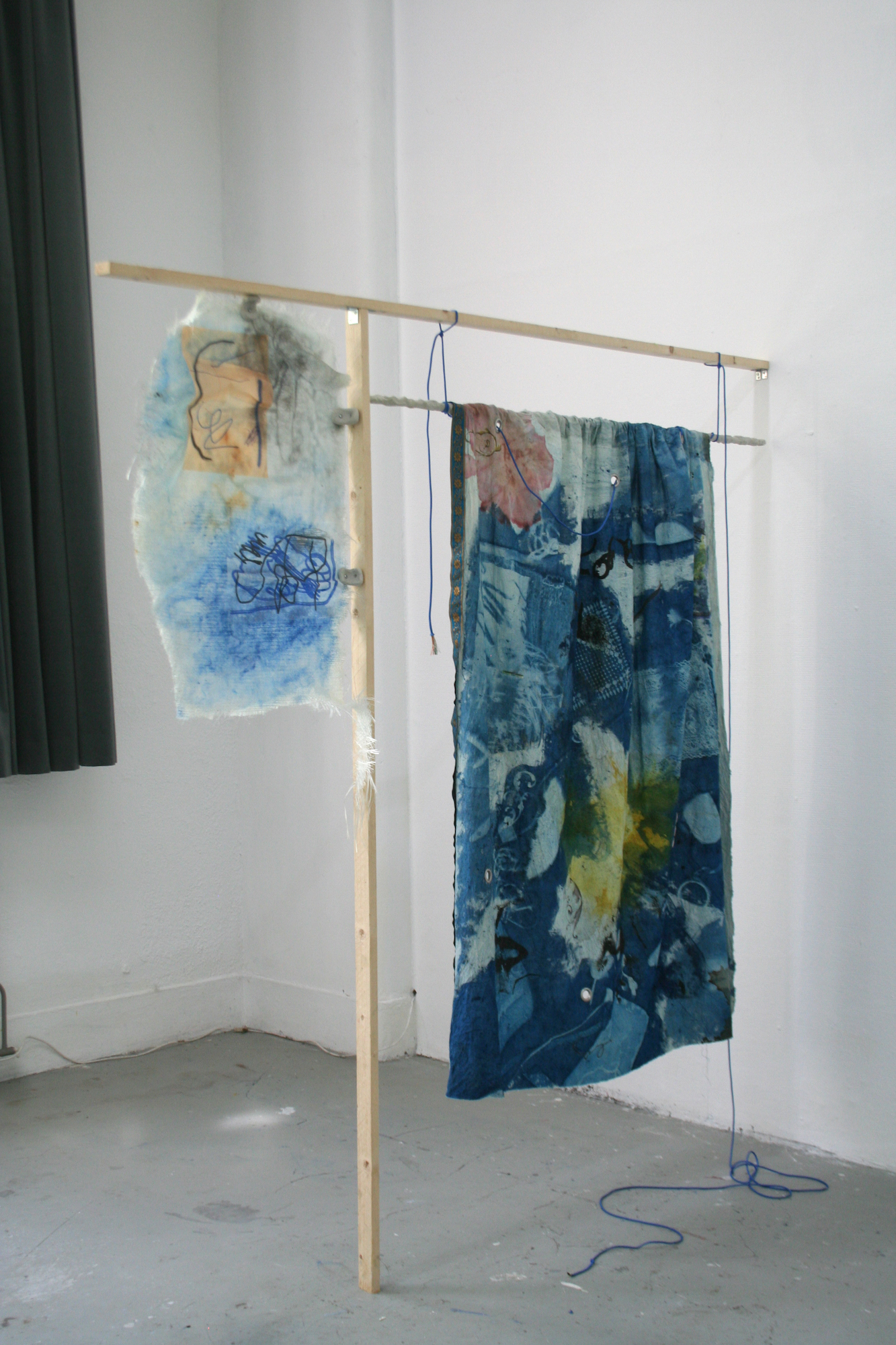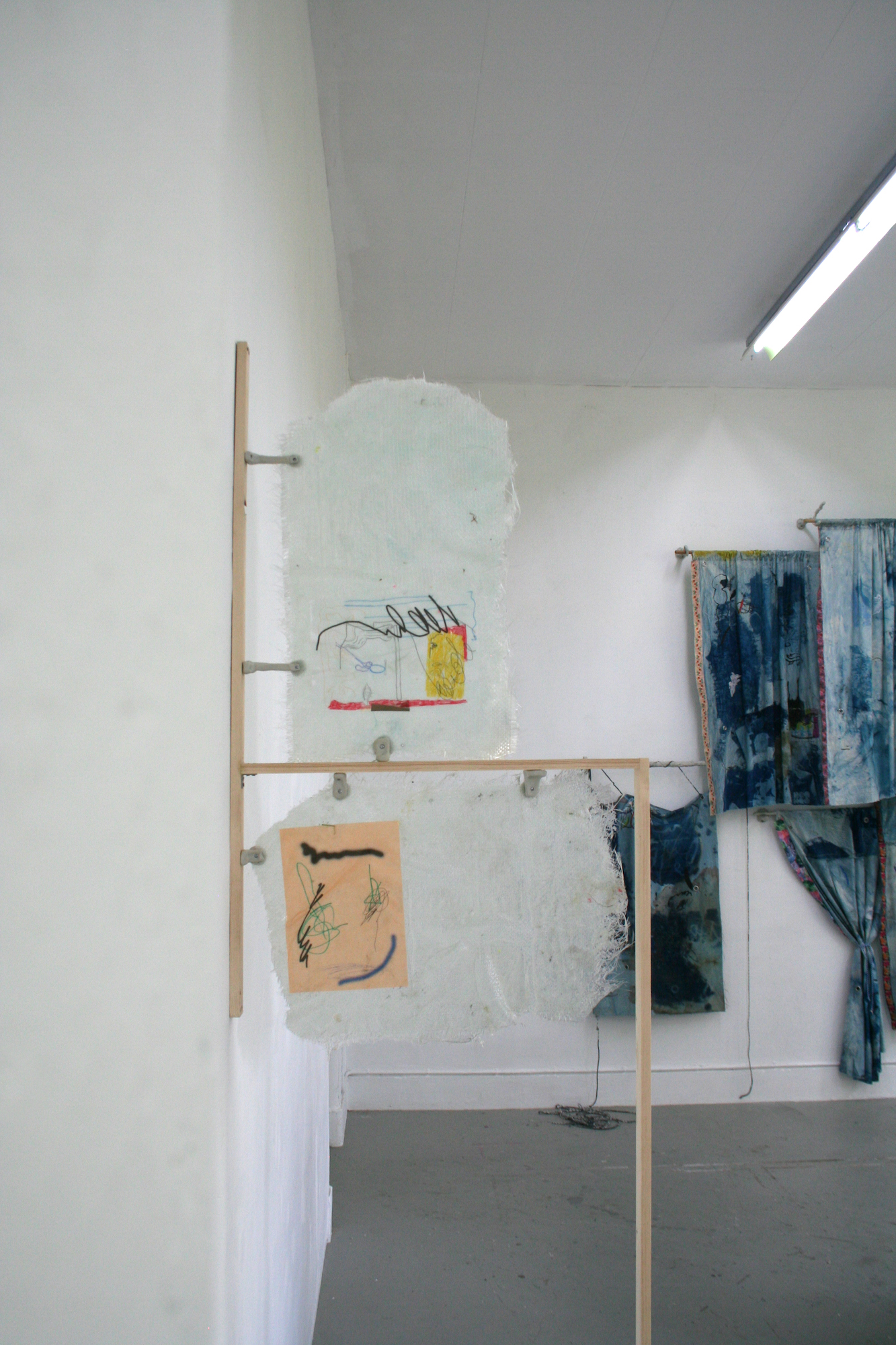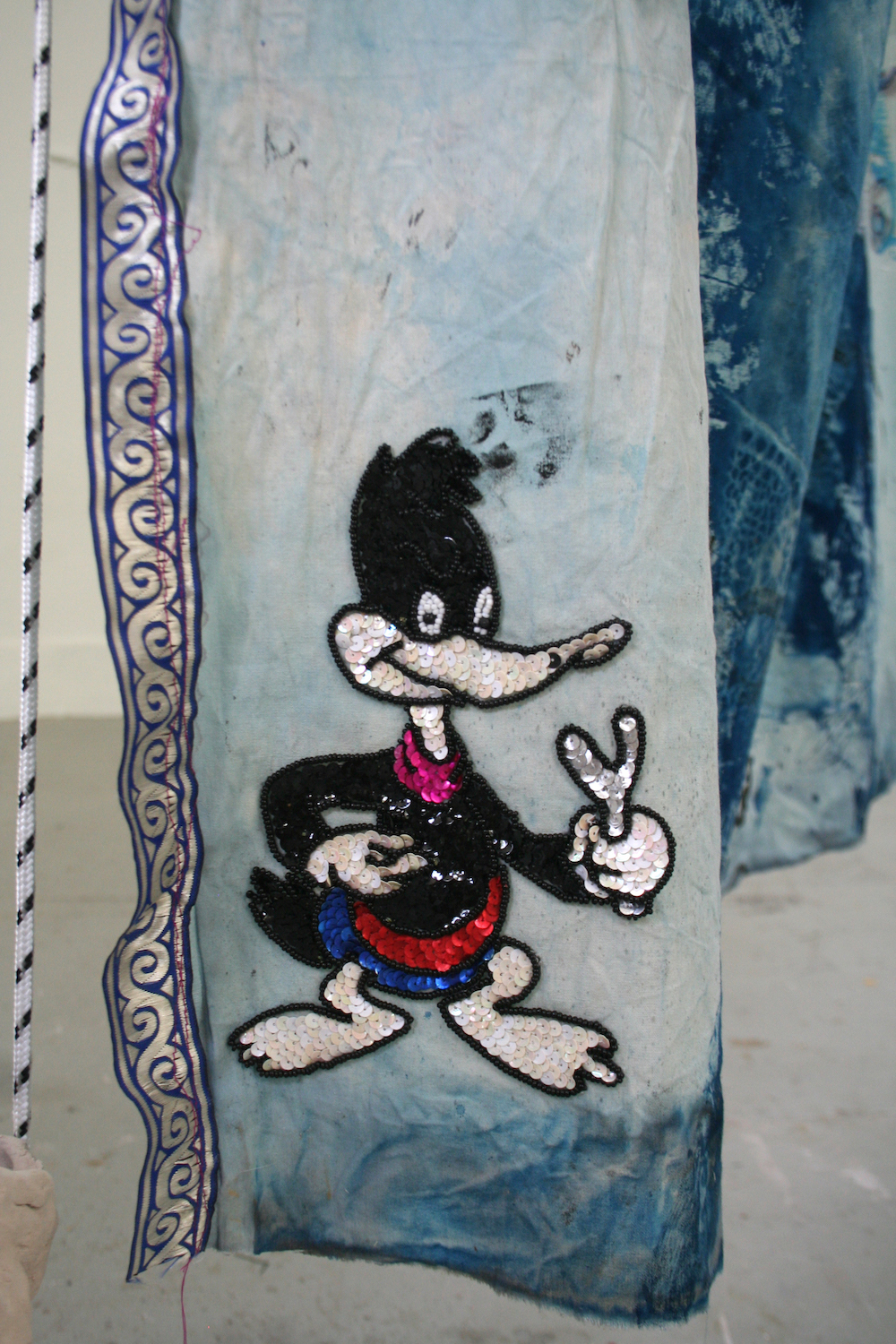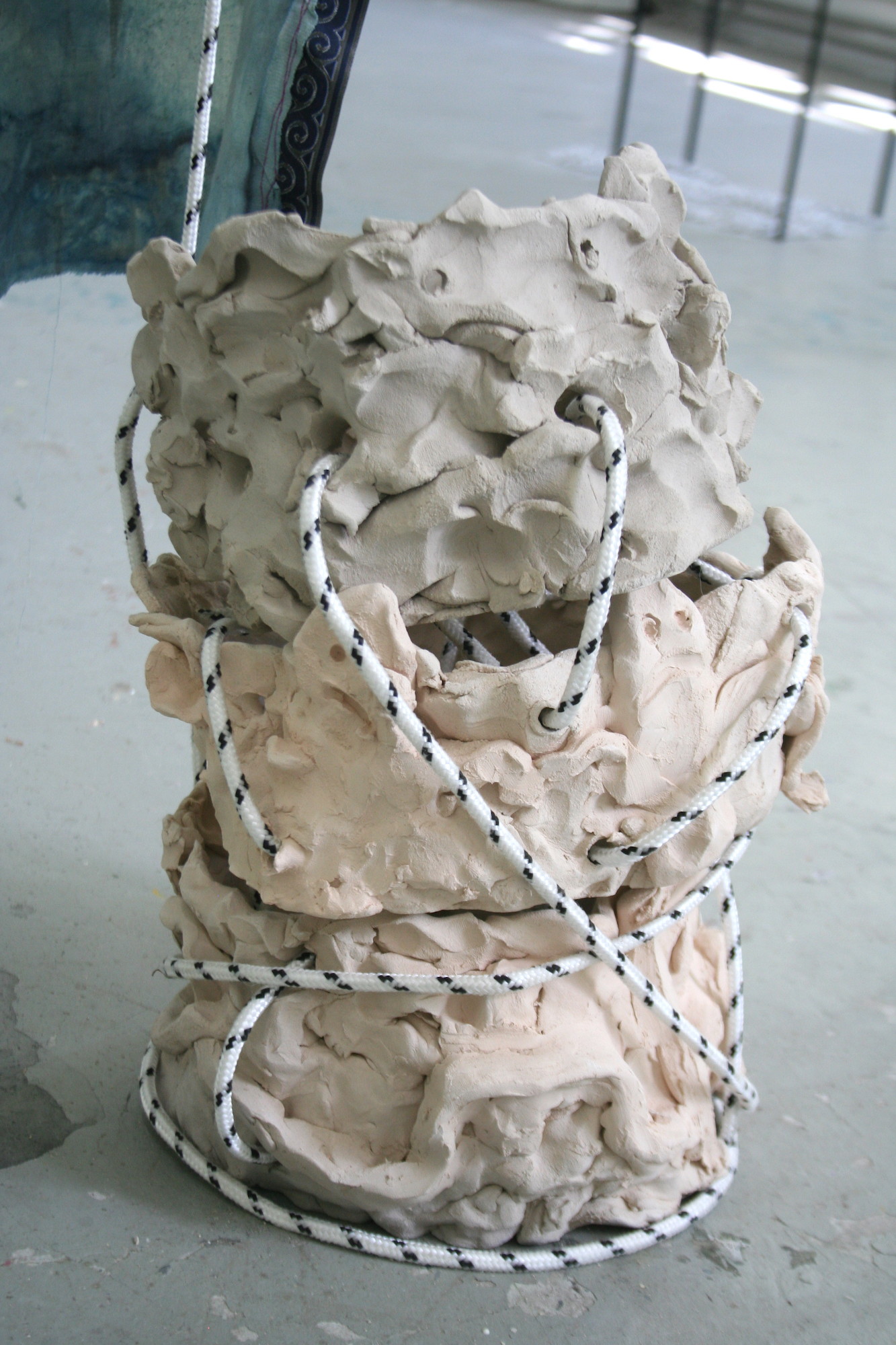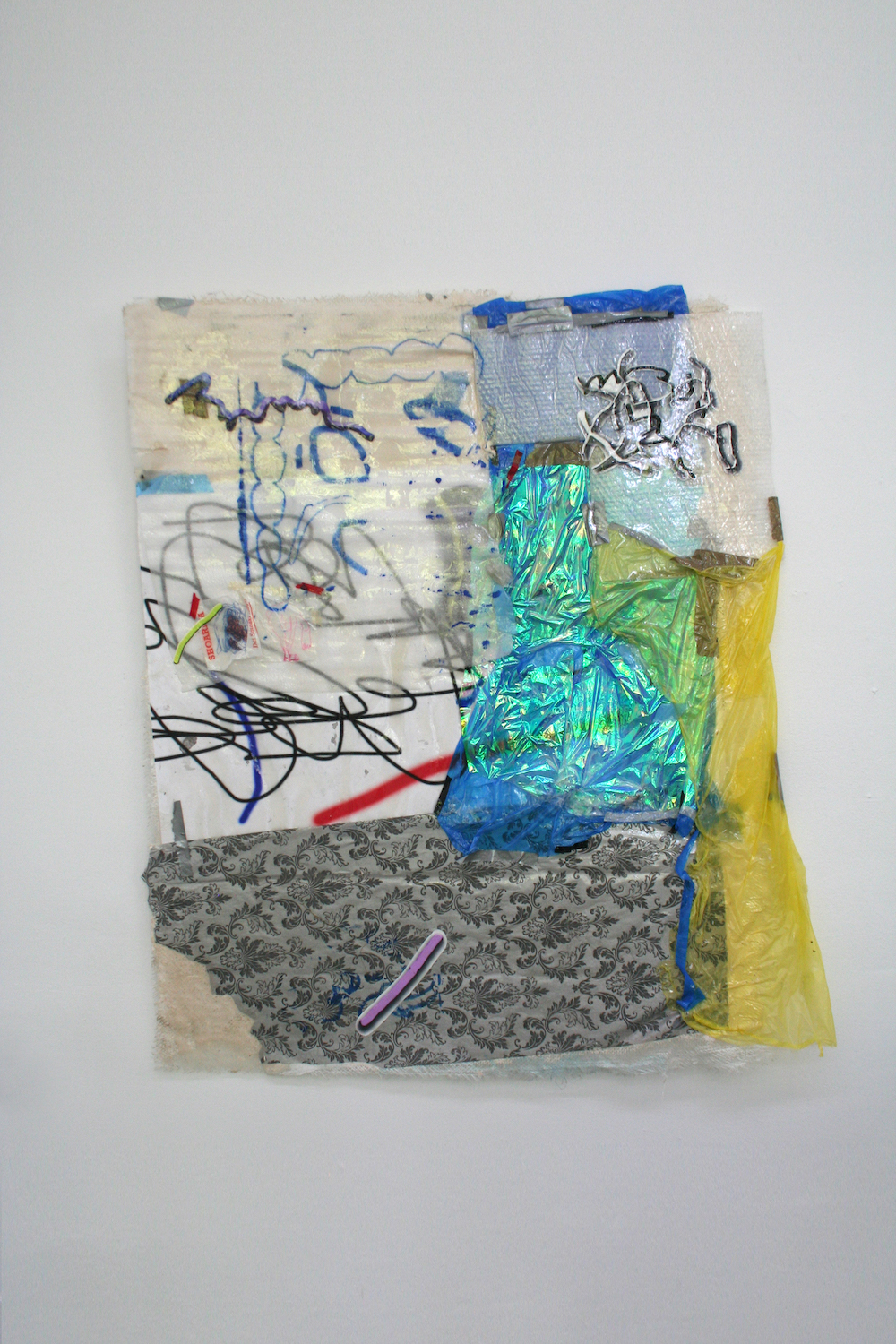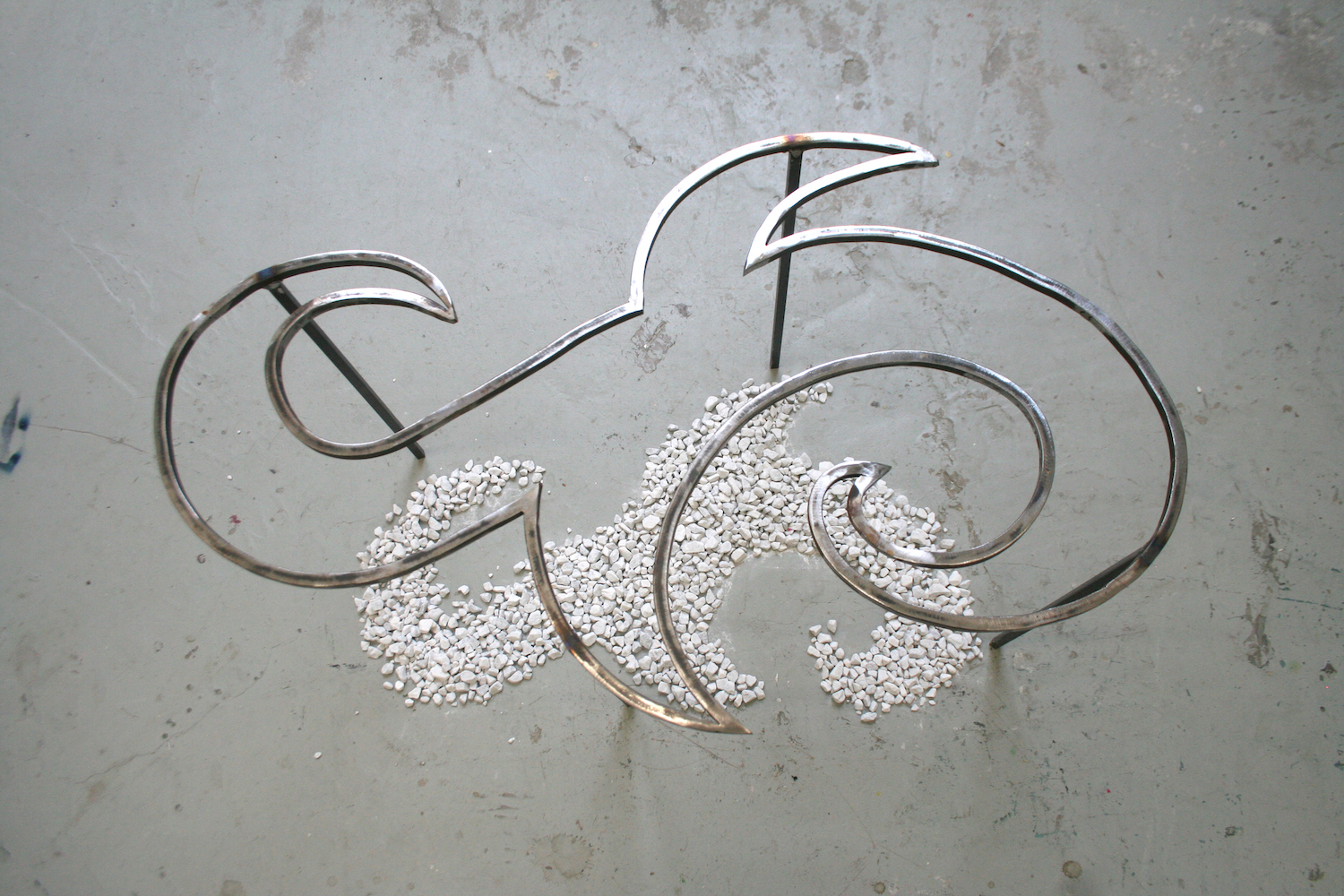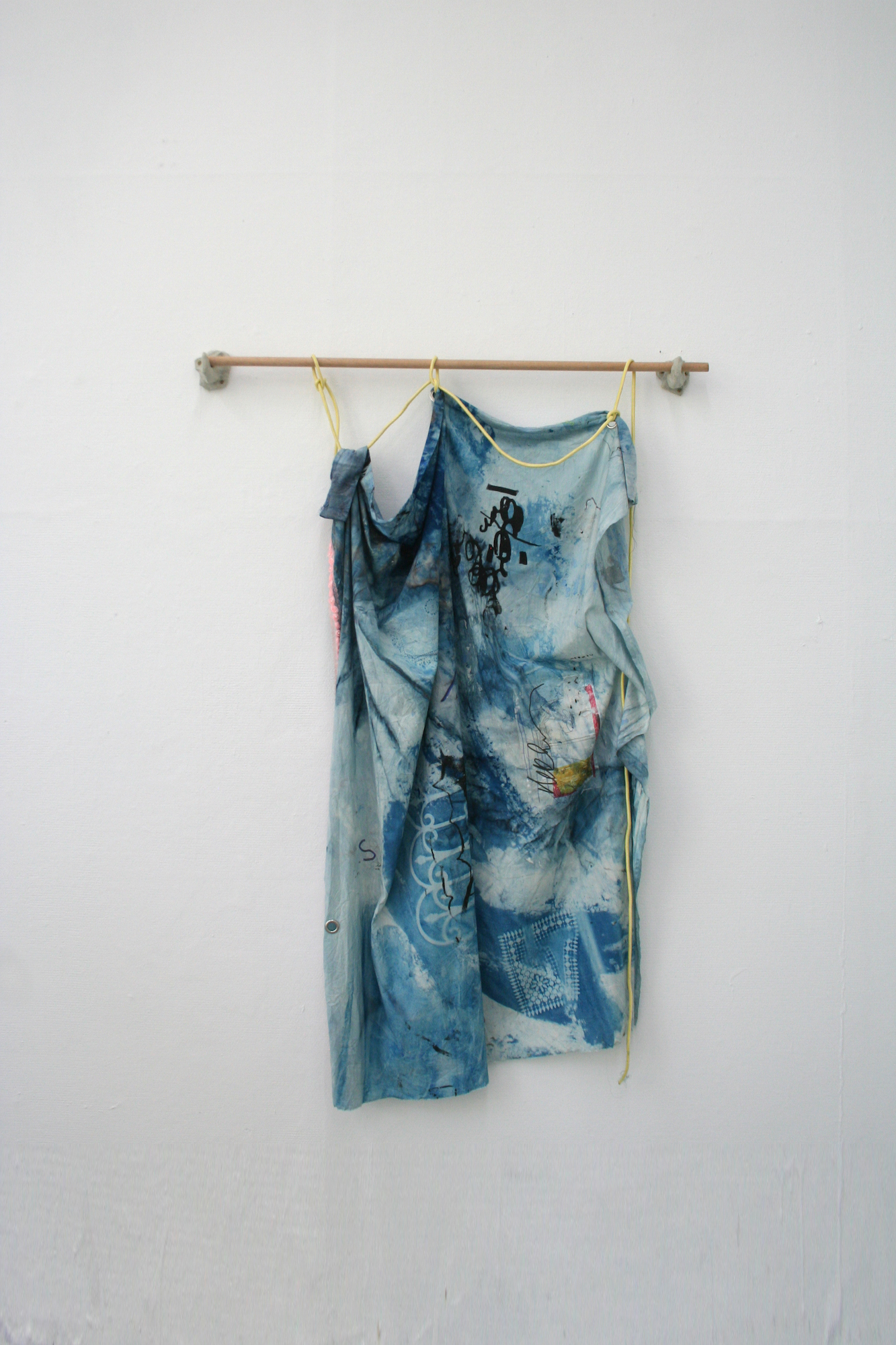
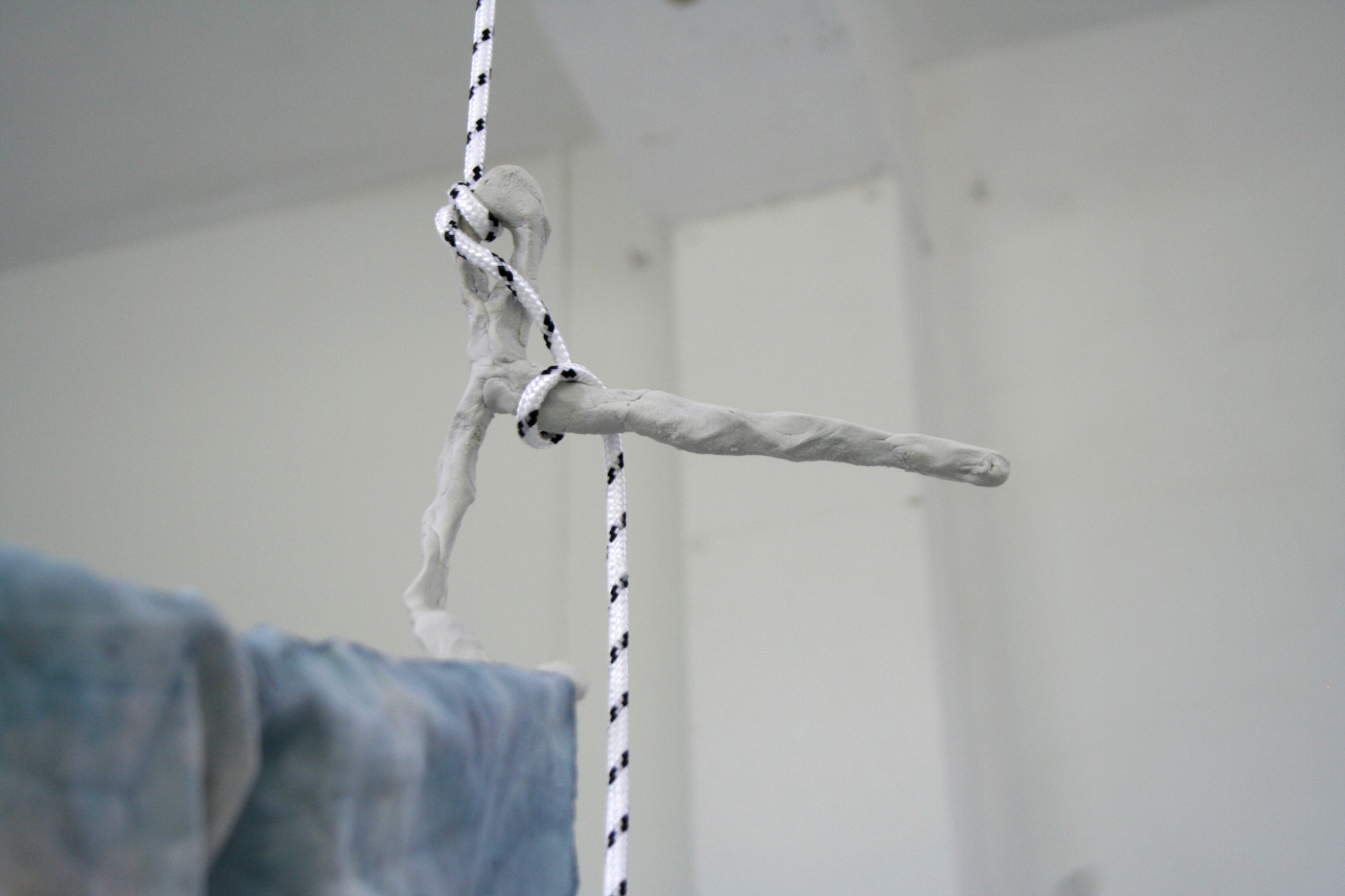





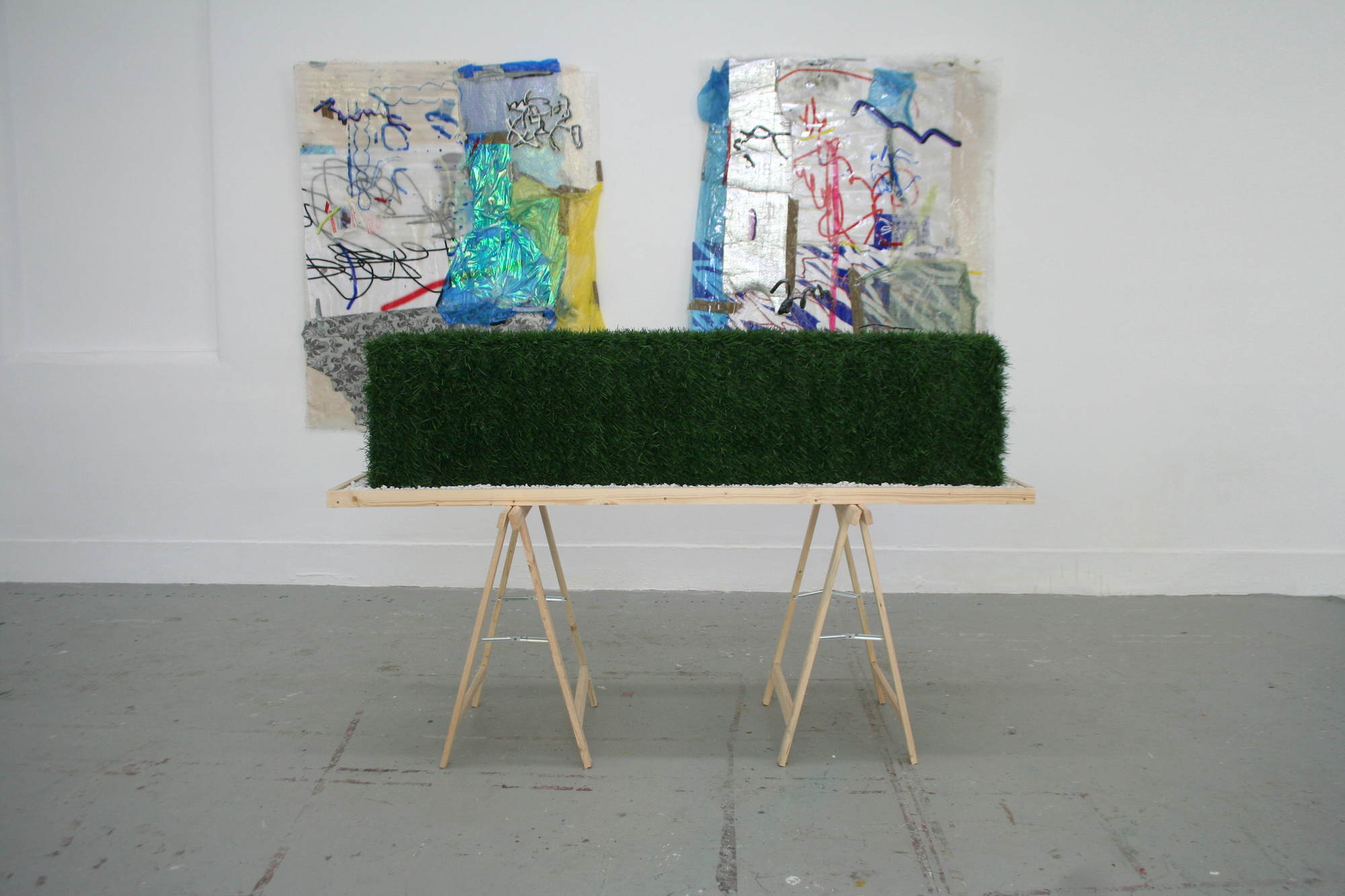













As a foreign curator who had long bent my thought and effort to deciphering a Dutch aesthetics, I was so envious. Of course I’d vaguely had these same thoughts so often, walking the streets, my absent-minded attention captured by these curious window installations that stand as a kind of generous decoy to what lies behind. They offer such a singular and revealing disclosure of the double-binds—the smoke and mirrors—of the famed Dutch tradition of ‘transparency’ and its dispositif of interior and exterior. They invite a look ‘into’ that is suspended and foreclosed. As Arash so well points out, the meditative motifs that they often present – of buddhas for example – are the perfect floating signifier of psychological interiority offered up as deceptive screen of surface.
When I caught up with Arash again, in late May, the work was well underway. A series of replica windows were under construction alongside the ongoing practice of epoxy composite drawings in compressed plastic shards, and with two newer elements of cyanotype textile prints and comical astro-turf hedge- units, autonomously assembled on wheels. We looked at the visual diaries that informed the work, and talked about the long-term artistic questions that drive the work. How to trace images through material and virtual worlds? How to stage sculptural frontality as an image itself? How to artistically cognize the truths of acculturation, and political climates, without becoming their servant?
The exhibition, Curtains, takes up the curious, entertaining, and utterly profound mise-en-scene of these window displays as a reversal at the heart of this practice. Arash wants us to look at the curtains, and therein to see the real show.
Excerpt from text by Vivian Ziherl.
Read full text here.
As a foreign curator who had long bent my thought and effort to deciphering a Dutch aesthetics, I was so envious. Of course I’d vaguely had these same thoughts so often, walking the streets, my absent-minded attention captured by these curious window installations that stand as a kind of generous decoy to what lies behind. They offer such a singular and revealing disclosure of the double-binds—the smoke and mirrors—of the famed Dutch tradition of ‘transparency’ and its dispositif of interior and exterior. They invite a look ‘into’ that is suspended and foreclosed. As Arash so well points out, the meditative motifs that they often present – of buddhas for example – are the perfect floating signifier of psychological interiority offered up as deceptive screen of surface.
When I caught up with Arash again, in late May, the work was well underway. A series of replica windows were under construction alongside the ongoing practice of epoxy composite drawings in compressed plastic shards, and with two newer elements of cyanotype textile prints and comical astro-turf hedge- units, autonomously assembled on wheels. We looked at the visual diaries that informed the work, and talked about the long-term artistic questions that drive the work. How to trace images through material and virtual worlds? How to stage sculptural frontality as an image itself? How to artistically cognize the truths of acculturation, and political climates, without becoming their servant?
The exhibition, Curtains, takes up the curious, entertaining, and utterly profound mise-en-scene of these window displays as a reversal at the heart of this practice. Arash wants us to look at the curtains, and therein to see the real show.
Excerpt from text by Vivian Ziherl.
Read full text here.
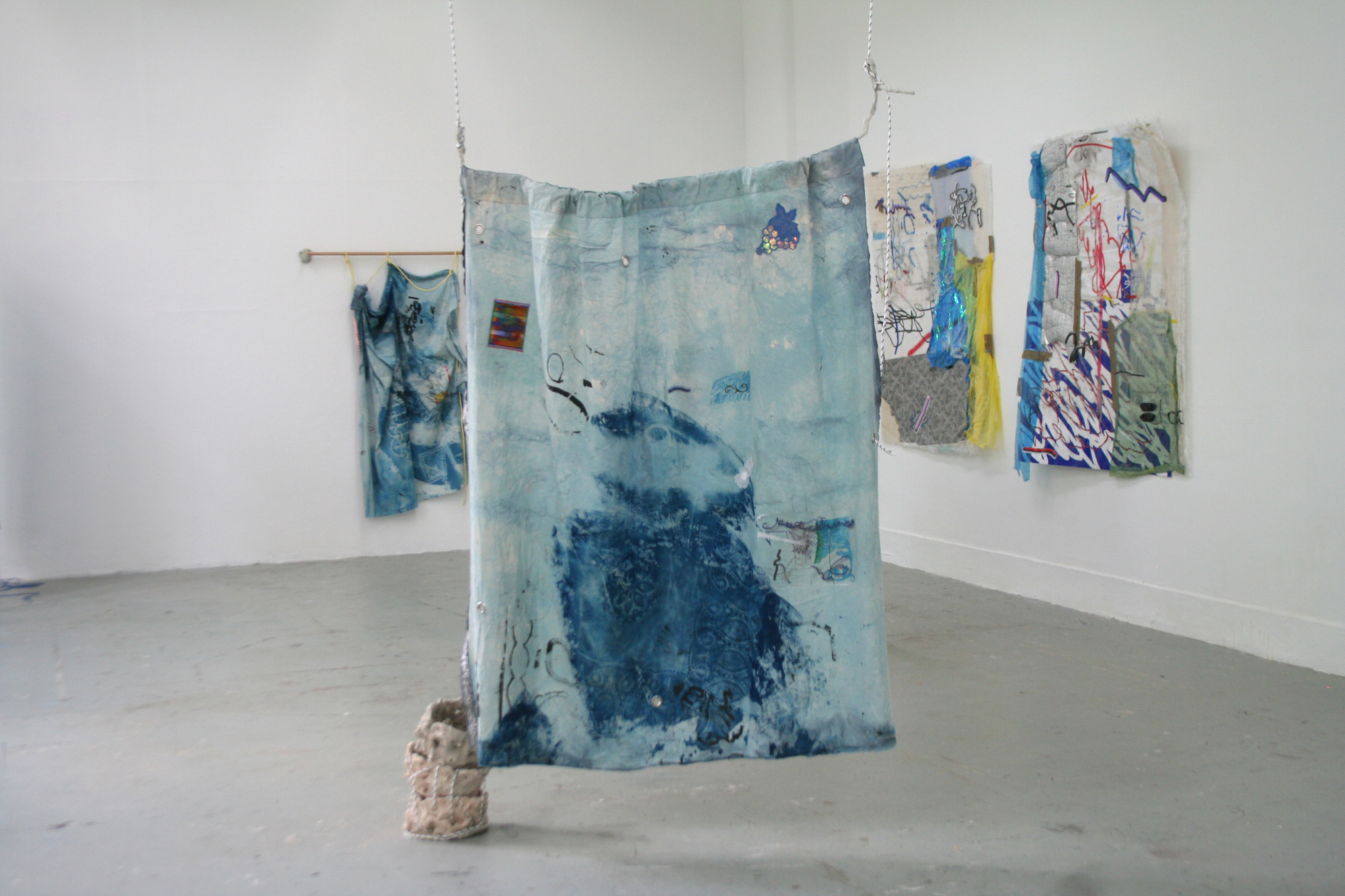
As a foreign curator who had long bent my thought and effort to deciphering a Dutch aesthetics, I was so envious. Of course I’d vaguely had these same thoughts so often, walking the streets, my absent-minded attention captured by these curious window installations that stand as a kind of generous decoy to what lies behind. They offer such a singular and revealing disclosure of the double-binds—the smoke and mirrors—of the famed Dutch tradition of ‘transparency’ and its dispositif of interior and exterior. They invite a look ‘into’ that is suspended and foreclosed. As Arash so well points out, the meditative motifs that they often present – of buddhas for example – are the perfect floating signifier of psychological interiority offered up as deceptive screen of surface.
When I caught up with Arash again, in late May, the work was well underway. A series of replica windows were under construction alongside the ongoing practice of epoxy composite drawings in compressed plastic shards, and with two newer elements of cyanotype textile prints and comical astro-turf hedge- units, autonomously assembled on wheels. We looked at the visual diaries that informed the work, and talked about the long-term artistic questions that drive the work. How to trace images through material and virtual worlds? How to stage sculptural frontality as an image itself? How to artistically cognize the truths of acculturation, and political climates, without becoming their servant?
The exhibition, Curtains, takes up the curious, entertaining, and utterly profound mise-en-scene of these window displays as a reversal at the heart of this practice. Arash wants us to look at the curtains, and therein to see the real show.
Excerpt from text by Vivian Ziherl.
Read full text here.

As a foreign curator who had long bent my thought and effort to deciphering a Dutch aesthetics, I was so envious. Of course I’d vaguely had these same thoughts so often, walking the streets, my absent-minded attention captured by these curious window installations that stand as a kind of generous decoy to what lies behind. They offer such a singular and revealing disclosure of the double-binds—the smoke and mirrors—of the famed Dutch tradition of ‘transparency’ and its dispositif of interior and exterior. They invite a look ‘into’ that is suspended and foreclosed. As Arash so well points out, the meditative motifs that they often present – of buddhas for example – are the perfect floating signifier of psychological interiority offered up as deceptive screen of surface.
When I caught up with Arash again, in late May, the work was well underway. A series of replica windows were under construction alongside the ongoing practice of epoxy composite drawings in compressed plastic shards, and with two newer elements of cyanotype textile prints and comical astro-turf hedge- units, autonomously assembled on wheels. We looked at the visual diaries that informed the work, and talked about the long-term artistic questions that drive the work. How to trace images through material and virtual worlds? How to stage sculptural frontality as an image itself? How to artistically cognize the truths of acculturation, and political climates, without becoming their servant?
The exhibition, Curtains, takes up the curious, entertaining, and utterly profound mise-en-scene of these window displays as a reversal at the heart of this practice. Arash wants us to look at the curtains, and therein to see the real show.
Excerpt from text by Vivian Ziherl.
Read full text here.
As a foreign curator who had long bent my thought and effort to deciphering a Dutch aesthetics, I was so envious. Of course I’d vaguely had these same thoughts so often, walking the streets, my absent-minded attention captured by these curious window installations that stand as a kind of generous decoy to what lies behind. They offer such a singular and revealing disclosure of the double-binds—the smoke and mirrors—of the famed Dutch tradition of ‘transparency’ and its dispositif of interior and exterior. They invite a look ‘into’ that is suspended and foreclosed. As Arash so well points out, the meditative motifs that they often present – of buddhas for example – are the perfect floating signifier of psychological interiority offered up as deceptive screen of surface.
When I caught up with Arash again, in late May, the work was well underway. A series of replica windows were under construction alongside the ongoing practice of epoxy composite drawings in compressed plastic shards, and with two newer elements of cyanotype textile prints and comical astro-turf hedge- units, autonomously assembled on wheels. We looked at the visual diaries that informed the work, and talked about the long-term artistic questions that drive the work. How to trace images through material and virtual worlds? How to stage sculptural frontality as an image itself? How to artistically cognize the truths of acculturation, and political climates, without becoming their servant?
The exhibition, Curtains, takes up the curious, entertaining, and utterly profound mise-en-scene of these window displays as a reversal at the heart of this practice. Arash wants us to look at the curtains, and therein to see the real show.
Excerpt from text by Vivian Ziherl.
Read full text here.


As a foreign curator who had long bent my thought and effort to deciphering a Dutch aesthetics, I was so envious. Of course I’d vaguely had these same thoughts so often, walking the streets, my absent-minded attention captured by these curious window installations that stand as a kind of generous decoy to what lies behind. They offer such a singular and revealing disclosure of the double-binds—the smoke and mirrors—of the famed Dutch tradition of ‘transparency’ and its dispositif of interior and exterior. They invite a look ‘into’ that is suspended and foreclosed. As Arash so well points out, the meditative motifs that they often present – of buddhas for example – are the perfect floating signifier of psychological interiority offered up as deceptive screen of surface.
When I caught up with Arash again, in late May, the work was well underway. A series of replica windows were under construction alongside the ongoing practice of epoxy composite drawings in compressed plastic shards, and with two newer elements of cyanotype textile prints and comical astro-turf hedge- units, autonomously assembled on wheels. We looked at the visual diaries that informed the work, and talked about the long-term artistic questions that drive the work. How to trace images through material and virtual worlds? How to stage sculptural frontality as an image itself? How to artistically cognize the truths of acculturation, and political climates, without becoming their servant?
The exhibition, Curtains, takes up the curious, entertaining, and utterly profound mise-en-scene of these window displays as a reversal at the heart of this practice. Arash wants us to look at the curtains, and therein to see the real show.
Excerpt from text by Vivian Ziherl.
Read full text here.






